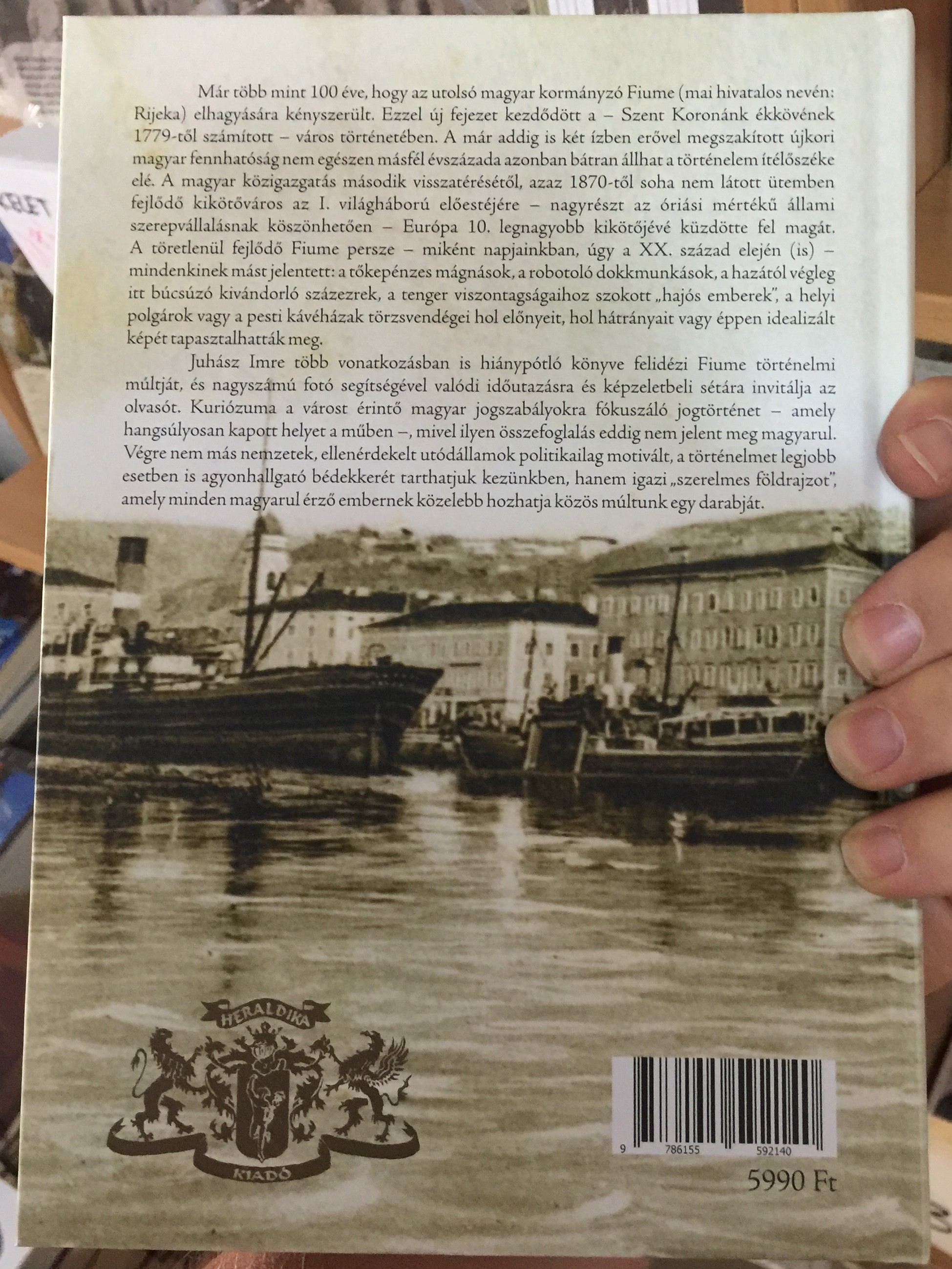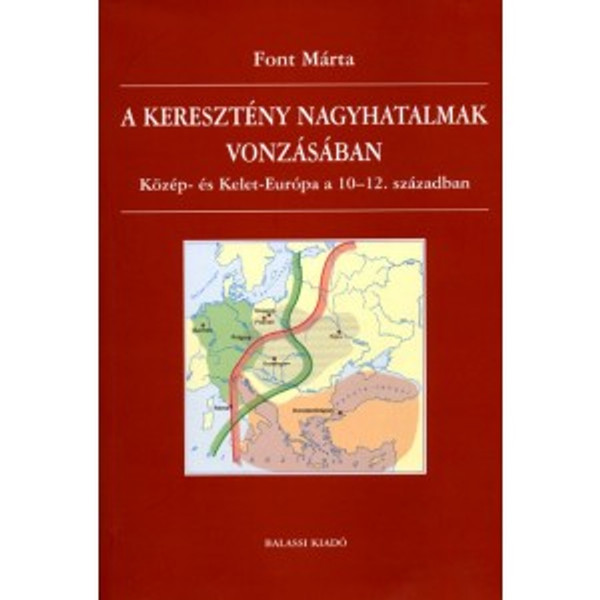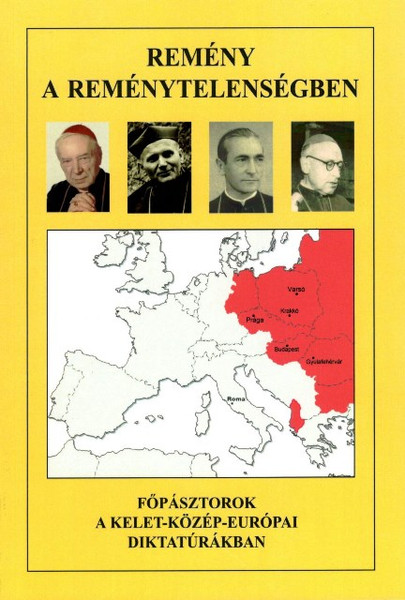Description
Fiume – Egy Közép-európai Város és Kikötő a Hatalmi Érdekek Metszéspontjában – Juhász Imre
Rijeka – A City in Central Europe in the Crosshairs of Powers
Product Details / Termékadatok
- Title / Cím: Fiume – Egy Közép-európai Város és Kikötő a Hatalmi Érdekek Metszéspontjában
- Author / Szerző: Juhász Imre
- Publisher / Kiadó: Heraldika Kiadó
- Publication Year / Kiadás Éve: 2020
- Format / Formátum: Hardcover / Keménytáblás
- Pages / Oldalszám: 512
- ISBN-13: 9786155592140
- ISBN-10: 963409256X
- Language / Nyelv: Hungarian / Magyar
Overview / Áttekintés
Juhász Imre monumental work, Fiume – Egy Közép-európai Város és Kikötő a Hatalmi Érdekek Metszéspontjában, explores the fascinating and turbulent history of Fiume (modern-day Rijeka). This in-depth study examines the city's strategic importance as a key port in Central Europe, situated at the intersection of various national, economic, and political interests.
The book provides a comprehensive historical narrative, supported by archival documents, maps, and photographs, tracing Fiume’s changing sovereignty and geopolitical significance over the centuries. It highlights the city's role under Austro-Hungarian, Italian, Yugoslav, and Croatian rule, making it an essential read for historians, researchers, and those interested in European history and maritime studies.
Juhász Imre monumentális műve, Fiume – Egy Közép-európai Város és Kikötő a Hatalmi Érdekek Metszéspontjában, részletes és átfogó képet nyújt Fiume (a mai Rijeka) viharos történelméről. A könyv feltárja a város stratégiai szerepét Közép-Európa egyik legfontosabb kikötőjeként, amely évszázadokon keresztül különböző nemzeti, gazdasági és politikai érdekek ütközőpontja volt.
A mű levéltári dokumentumok, térképek és fényképek segítségével mutatja be Fiume szuverenitásának változásait és geopolitikai jelentőségét, különös tekintettel az Osztrák-Magyar Monarchia, Olaszország, Jugoszlávia és Horvátország uralma alatt eltöltött időszakokra. A könyv elengedhetetlen olvasmány mindazok számára, akik érdeklődnek Európa történelme és a tengeri kereskedelem iránt.
Product Features / Termékjellemzők
✔ High-Quality Hardcover Edition / Prémium minőségű keménytáblás kiadás – Durable binding and elegant design / Tartós kötés, elegáns kivitel
✔ Comprehensive Historical Analysis / Átfogó történelmi elemzés – Covers political, economic, and social aspects of Fiume’s history / Politikai, gazdasági és társadalmi szempontból is vizsgálja Fiume történelmét
✔ Richly Illustrated / Gazdagon illusztrált – Includes rare archival photographs, maps, and documents / Ritka archív fényképekkel, térképekkel és dokumentumokkal
✔ For Scholars and Enthusiasts / Történészeknek és érdeklődőknek – Ideal for academic study and general interest / Tudományos kutatáshoz és általános érdeklődésre egyaránt ajánlott
✔ Geopolitical Relevance / Geopolitikai jelentőség – Examines the city's role in Central European history / Bemutatja a város szerepét Közép-Európa történelmében
Interesting Facts / Érdekes Tények
-
Strategic Importance / Stratégiai jelentőség – Fiume was one of the most contested ports in Europe.
Fiume Európa egyik leginkább vitatott kikötője volt. -
Multiple Sovereignties / Több ország uralma alatt – The city changed hands between Austria-Hungary, Italy, Yugoslavia, and Croatia.
A város az Osztrák-Magyar Monarchia, Olaszország, Jugoszlávia és Horvátország fennhatósága alatt állt. -
Austro-Hungarian Maritime Hub / Az Osztrák-Magyar Monarchia tengeri központja – Fiume was the only major seaport of Hungary before 1918.
Fiume volt az egyetlen jelentős magyar tengeri kikötő 1918 előtt.
Publisher / Kiadó
Published by Heraldika Kiadó, a renowned publisher specializing in historical and cultural works.
Kiadta a Heraldika Kiadó, amely neves kiadó a történelmi és kulturális kiadványok területén.
We Value Your Feedback! / Fontos számunkra a visszajelzése!
Share your thoughts on this book! Your review helps other readers discover valuable historical content.
Ossza meg véleményét erről a könyvről! Visszajelzése segít más olvasóknak felfedezni ezt az értékes történelmi kiadványt.
Hashtags
#Fiume #Rijeka #Történelem #MagyarTörténelem #KözépEurópa #HeraldikaKiadó #Tengerészet #Politika #JuhászImre #História












